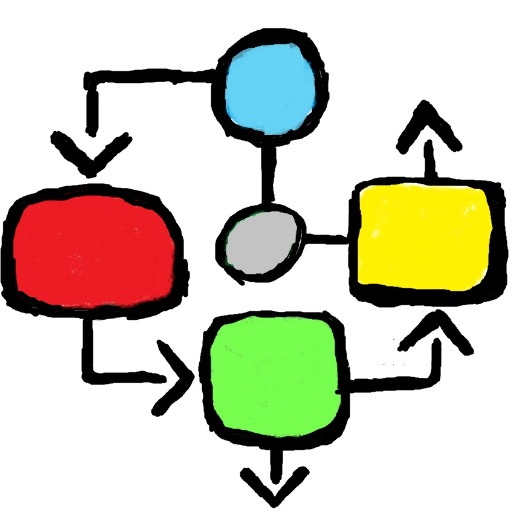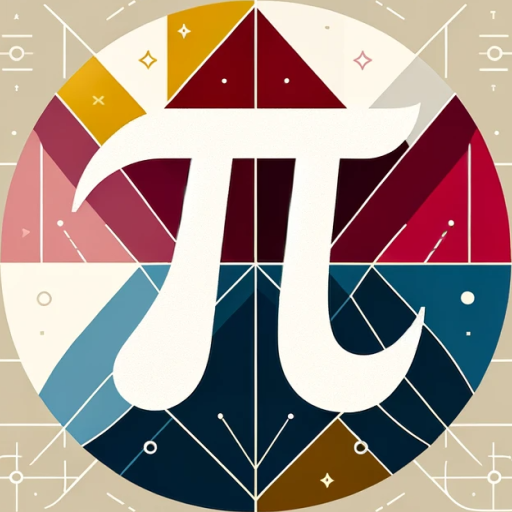Graph Theory-graph theory guidance for problem-solving.
AI-powered graph theory for real-world solutions.
Friendly and patient guide in Graph Theory.
How can I apply Graph Theory to my project?
Explain Graph Theory in the context of network analysis.
Generate a graph that represents a social network.
Find real-life applications of Graph Theory in logistics.
Related Tools

Diagrams & Data: Research, Analyze, Visualize
Complex Visualizations (Diagram & Charts), Data Analysis & Reseach. For Coders: Visualize Databases, UserFlows, ERD, PlantUML and More. For business & data analysis: Mindmaps, Flowcharts and more.

Graph Maker
This GPT can provide guidance on the most appropriate type of graph for different data sets, such as bar charts, line graphs, pie charts, scatter plots, and more.

Dr. Graph
Expert at creating accurate graphs with researched data

math
Solve Advance Math questions with Concepts & Steps using Image or Text. Previously Math Expert.

Algorithm Ace
Expert in advanced algorithms and data structures, providing clear and detailed explanations.

Electronics and Circuit Analysis
Expert in electronics circuits analysis, adept at handling ambiguous queries.
20.0 / 5 (200 votes)
Introduction to Graph Theory
Graph Theory is a branch of mathematics that studies the relationships between objects using graphs, which are abstract structures made up of vertices (or nodes) and edges (or links). The primary goal of Graph Theory is to analyze these relationships, providing insights into connectivity, flow, and other network properties. Graphs can represent various systems in the real world, such as social networks, transportation systems, communication networks, and biological networks. For example, in a social network graph, individuals are represented as vertices, and the connections or relationships between them are the edges. This structure helps in understanding patterns like social influence, community detection, and information dissemination.

Main Functions of Graph Theory
Analyzing Network Connectivity
Example
Finding the shortest path in transportation networks.
Scenario
In a city’s subway system, stations can be represented as vertices, and the tracks between them as edges. Graph Theory can be used to determine the shortest route between two stations, optimizing travel time for commuters.
Detecting Communities
Example
Identifying clusters in social networks.
Scenario
In a social media platform, users are vertices and their friendships are edges. Graph Theory can be applied to identify communities within the network—groups of users who are more densely connected to each other than to the rest of the network. This is useful for targeted marketing and content recommendation.
Optimizing Resource Allocation
Example
Improving network design in telecommunications.
Scenario
Telecommunication companies use Graph Theory to design efficient networks that minimize costs while maximizing coverage. Each cell tower is a vertex, and the connections between them are edges. By analyzing the graph, companies can determine optimal locations for new towers and improve service quality.
Ideal Users of Graph Theory
Data Scientists and Analysts
These professionals use Graph Theory to analyze complex datasets, uncover hidden patterns, and make predictions. For instance, in social network analysis, data scientists apply graph algorithms to detect influential nodes, predict user behavior, and identify trends.
Network Engineers and IT Professionals
Network engineers utilize Graph Theory to design, optimize, and troubleshoot network infrastructures. Whether it's improving the efficiency of data routing in a computer network or enhancing the reliability of electrical grids, these users benefit from the insights Graph Theory provides into network performance and resilience.

Guidelines for Using Graph Theory
Step 1
Visit aichatonline.org for a free trial without login, no need for ChatGPT Plus.
Step 2
Familiarize yourself with basic graph theory concepts such as vertices, edges, and graph types like directed, undirected, weighted, and unweighted graphs. This foundational knowledge will enable you to effectively apply graph theory in various contexts.
Step 3
Identify the problem or scenario where graph theory can be applied. Common use cases include network analysis, route optimization, social network analysis, and solving puzzles like the Traveling Salesman Problem.
Step 4
Choose the appropriate graph algorithm or model. Depending on the problem, you might need to apply algorithms such as Dijkstra’s for shortest path, PageRank for ranking, or minimum spanning tree algorithms for network optimization.
Step 5
Implement and test your graph theory solution using tools like Python’s NetworkX library, Graphviz for visualization, or specialized software like Gephi for more complex analyses. Evaluate and refine your approach based on the results.
Try other advanced and practical GPTs
DnDGPT - Full Canvas Battle Map Maker
AI-powered full-canvas battle map creator.

Design Sequence Diagram & Implement
AI-powered sequence diagrams and API code generation.

Plagarism Remover
AI-powered Rephrasing for Plagiarism-free Content

Watermark Remover
AI-Powered Image Watermark Remover.

Remove AI plagiarism
AI-powered originality for your content.

Forex Scalp Trader Unlocked
AI-Powered Forex Scalping for Precision Trades

Music Theory
AI-powered music theory insights.

Theory of Computation
AI-powered insights into computation theory.

Meeting Summary and Action Item Specialist
AI-powered summaries and action items in seconds.

Hand-drawn illustration GPT
AI-powered doodle creator for everyone

Progress Note
AI-powered therapy note generation tool.

Scientific Article Summarizer
AI-powered tool for precise scientific summaries.

- Algorithm Design
- Data Modeling
- Network Analysis
- Graph Visualization
- Route Optimization
Graph Theory Q&A
What is graph theory used for?
Graph theory is used to model relationships between objects. It is widely applied in computer science for network analysis, in biology for studying ecosystems, in logistics for route optimization, and in social sciences for analyzing social networks, among many other fields.
How can graph theory optimize network structures?
Graph theory optimizes network structures by modeling nodes as vertices and connections as edges. Algorithms like Dijkstra’s find the shortest paths, while Kruskal’s and Prim’s algorithms build efficient network trees, minimizing the total connection cost.
What are common graph algorithms?
Common graph algorithms include Dijkstra's algorithm for shortest paths, Prim's and Kruskal's for minimum spanning trees, Depth-First Search (DFS) and Breadth-First Search (BFS) for traversing graphs, and the Bellman-Ford algorithm for finding shortest paths in graphs with negative weights.
How do I visualize graphs?
Graphs can be visualized using tools like Graphviz, which produces dot files to create visual representations, or Python libraries like NetworkX, which allows for the creation and manipulation of complex graphs with various layout options for better visualization.
Can graph theory solve real-world problems?
Yes, graph theory is essential for solving real-world problems like optimizing delivery routes, analyzing social media networks, designing circuits, managing resources in computer networks, and even in bioinformatics for understanding molecular structures.